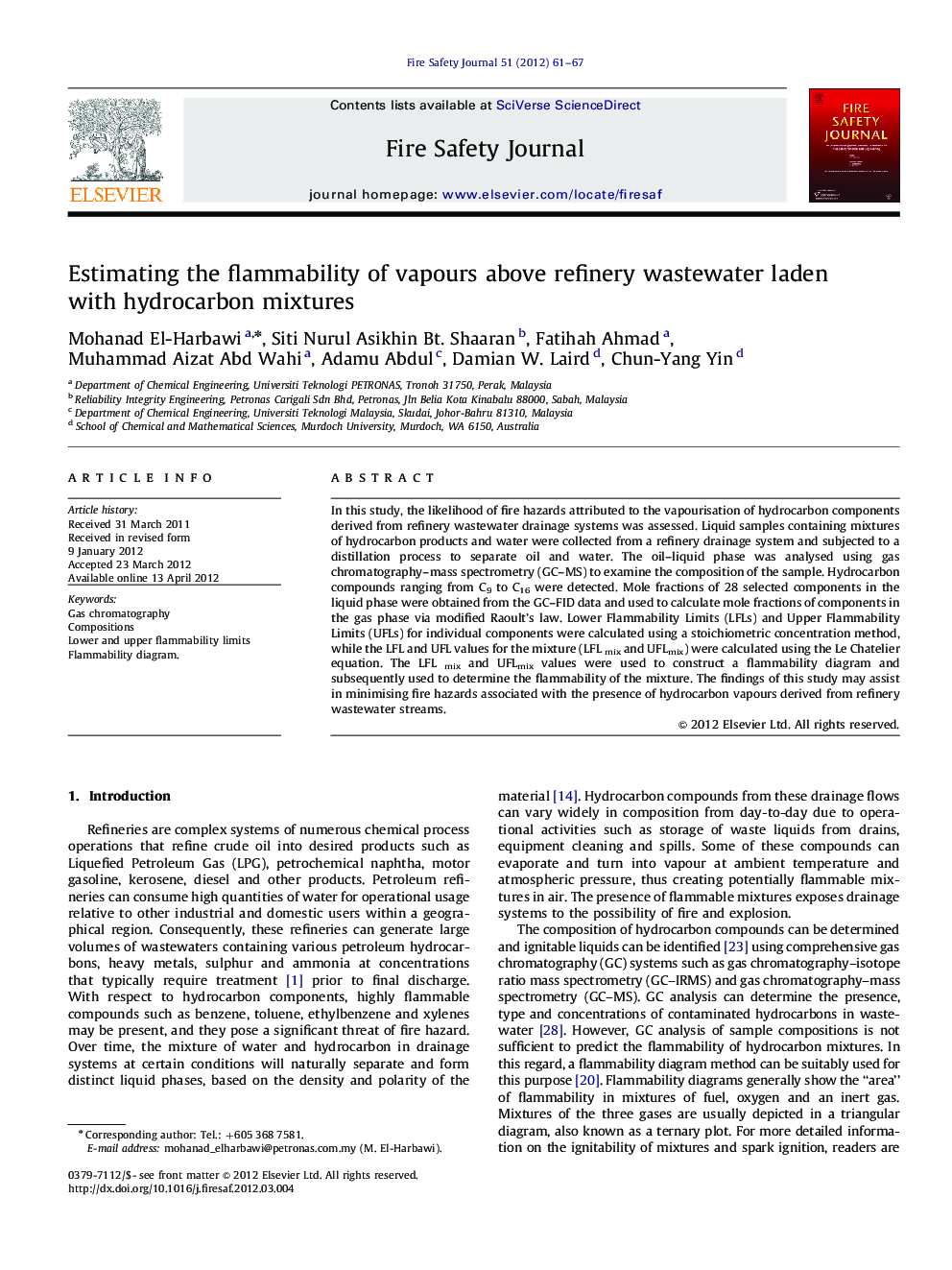| Article ID | Journal | Published Year | Pages | File Type |
|---|---|---|---|---|
| 270066 | Fire Safety Journal | 2012 | 7 Pages |
In this study, the likelihood of fire hazards attributed to the vapourisation of hydrocarbon components derived from refinery wastewater drainage systems was assessed. Liquid samples containing mixtures of hydrocarbon products and water were collected from a refinery drainage system and subjected to a distillation process to separate oil and water. The oil–liquid phase was analysed using gas chromatography–mass spectrometry (GC–MS) to examine the composition of the sample. Hydrocarbon compounds ranging from C9 to C16 were detected. Mole fractions of 28 selected components in the liquid phase were obtained from the GC–FID data and used to calculate mole fractions of components in the gas phase via modified Raoult’s law. Lower Flammability Limits (LFLs) and Upper Flammability Limits (UFLs) for individual components were calculated using a stoichiometric concentration method, while the LFL and UFL values for the mixture (LFL mix and UFLmix) were calculated using the Le Chatelier equation. The LFL mix and UFLmix values were used to construct a flammability diagram and subsequently used to determine the flammability of the mixture. The findings of this study may assist in minimising fire hazards associated with the presence of hydrocarbon vapours derived from refinery wastewater streams.
► We estimate the flammability limits of hydrocarbon vapours derived from refinery wastewater. ► The composition of the liquid phase was analysed using both GC–MS and GC–FID. ► Mole fractions of components in the gas phase were obtained via modified Raoult’s law. ► Flammability diagram was used to determine the flammability of the mixture.
